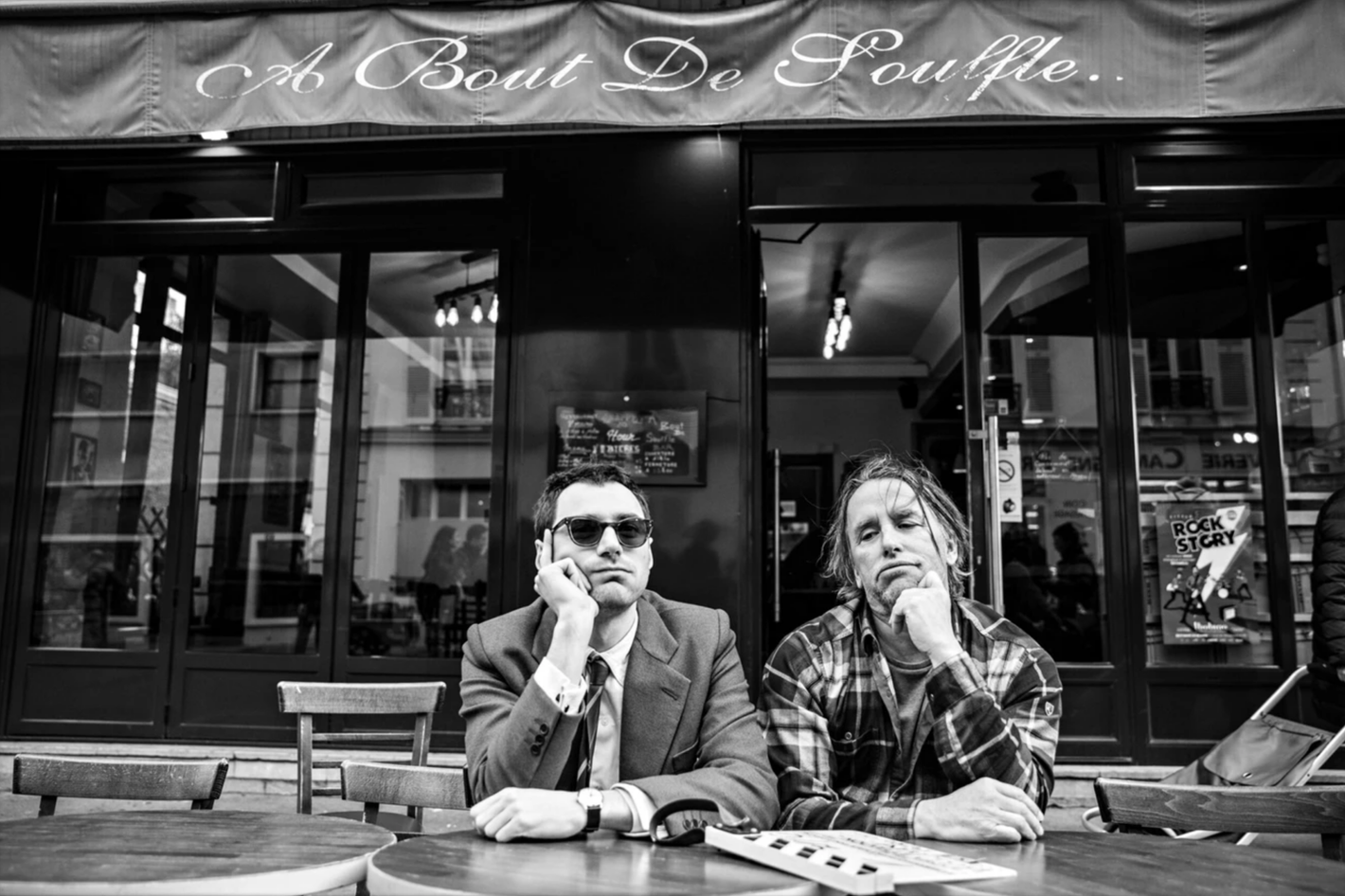Nouvelle Vague Makes a Case for the Ambition of Youth


Nouvelle Vague is “the story of Godard making Breathless, told in the style and spirit in which Godard made Breathless.” Or at least that’s the official description of the film provided by Cannes, where it just had its premiere. It’s not a claim that Richard Linklater’s latest, likable as it is, actually puts much effort into living up to. Aside from being shot in inviting black-and-white, Nouvelle Vague doesn’t attempt to mimic the choices — like the jump cuts, the documentary-esque camerawork, the heavy use of improvisation — that made Jean-Luc Godard’s directorial debut about an Bogart-idolizing criminal (Jean-Paul Belmondo) and an American journalism student (Jean Seberg) so radical when it hit theaters in 1960. It’s a light-footed but straightforward run at the story of how the 28-year-old Jean-Luc, fretting about feeling like the last of the Cahiers du Cinéma crew to make the leap into directing, finally ends up making his first feature, enlisting friends and skeptical professionals for a ramshackle, low-budget production not everyone involved was convinced would yield a finished product. In other words, it’s another hangout movie from Linklater, our current grand master of the genre, who can find the sublime in scenes of people shooting the shit.
Nouvelle Vague never reaches those kinds of heights, though it’s very good at depicting how, in the moment, making something revolutionary can be indistinguishable from just making a mess. Its Jean-Luc, played by Guillaume Marbeck in his first feature, isn’t a terribly reassuring figure, perpetually clad in sunglasses and fond of leaning on gnomish quotations from the greats. The movie, which is in French, is an incredible feat of casting, with an ensemble heavy on newcomers and unknowns (Finding Aubry Dullin, who plays Belmondo with the idiosyncratic appeal of the screen icon, is a particular miracle). As Seberg, Zoey Deutch, in an echo of Seberg’s already established career, is the film’s only famous face. As the professional in the room, that face is often screwed up in frustration when the camera isn’t rolling. The little friction there is in Nouvelle Vague comes from Jean-Luc’s clashes with Jean, who’d like a script, or a sense of a plan, or any reassurance that she’s not going to be humiliated, as well as with producer Georges de Beauregard (Bruno Dreyfürst), who’d like the same things, and also to know that he’s not going to lose his money.
But while Jean-Luc and Georges do at one point get into an actual skirmish on the floor, these clashes never escalate into anything dire. We have the reassurance that a masterpiece will come out of this process, despite Jean-Luc repeatedly sending everyone home after a few hours of shooting because he’s “out of ideas.” But everyone else — even Jean-Paul, who jokes that his agent keeps telling him he’ll never work again because of this — can take comfort in the idea that the stakes are relatively low, and the time commitment is minor. And that is, really, the point Nouvelle Vague sets out to make. It’s determined to approach its characters, which also include François Truffaut (Adrien Rouyard), Claude Chabrol (Antoine Besson), and Suzanne Schiffman (Jodie Ruth-Forest), not as future icons of cinema but as young, brash artists questioning conventions, determined to make great work. The film makes a case for creative indulgence, which is obviously something that requires the buy-in of producers with funding, as well as a cast and crew willing to put their names on the line.
In this sense, Nouvelle Vague feels less about the specifics of the French New Wave than it is about the indie scene Linklater came up in, which yielded its own share of auteurs who were once audacious kids themselves. His film recreates late ’50s Paris with the help of historical research, careful costuming, vintage cars, and the digital erasure of modern details (an intervention that its hero would surely have sneered at), but as much as it enjoys the moment it’s recreating, it’s not a nostalgia play. It delights in its characters’ rule-breaking and playfulness and experimentation, in the wheelchair used for a dolly shot, in Jean and Jean-Paul dancing together between takes. Nouvelle Vague’s only lulls come from the affectionate but clunky scenes of Jean-Luc receiving wisdom from various more established filmmakers who pass through the city, though it’s clear that Linklater wants to emphasize a continuity of cinematic innovation over the years.
What’s funny is that Linklater’s own efforts to push at the boundaries of the form have involved meticulous longitudinal projects like Boyhood and his ongoing version of Merrily We Roll Along that are shot over years, making use of the way its participants age and change. In the patience and planning these projects required, this process is the opposite of Jean-Luc’s shooting on the fly. And at the same time, Linklater’s process also requires a willingness to roll with what the universe gives you. Revolution isn’t just for the young — though Nouvelle Vague makes the case that it’s in the young that it most needs to be cultivated. With experience, you learn the world won’t end if things don’t work out — that an adventure, or an annoyance, can be just that.

Latest News
For Sale! 2016 Sea Ray 350 Sundancer – $180,000
Reel Deal Yacht is pleased to feature a meticulously maintained 2016 Sea...
Swan 128 Yacht ‘Be Cool’ Makes Its Debut: Sunday Superyacht Showcase
The Swan 128 Yacht: Be Cool Makes Waves On May 14, 2023,...
Ferretti Yachts vs. Sunseeker A Tale of Two Icons in Motion
In the upper echelons of yachting, ownership is not just acquisition—it’s alignment....
Supreme Court orders Maine House to restore vote of GOP lawmaker who ID-ed trans teen athlete online
The Supreme Court on Tuesday ordered the Maine legislature to count the...
Zakai Zeigler, SEC’s 2-time defensive player of year, suing NCAA to play 5th season in 5 years
Two-time Southeastern Conference defensive player of the year Zakai Zeigler is suing...














Leave a comment